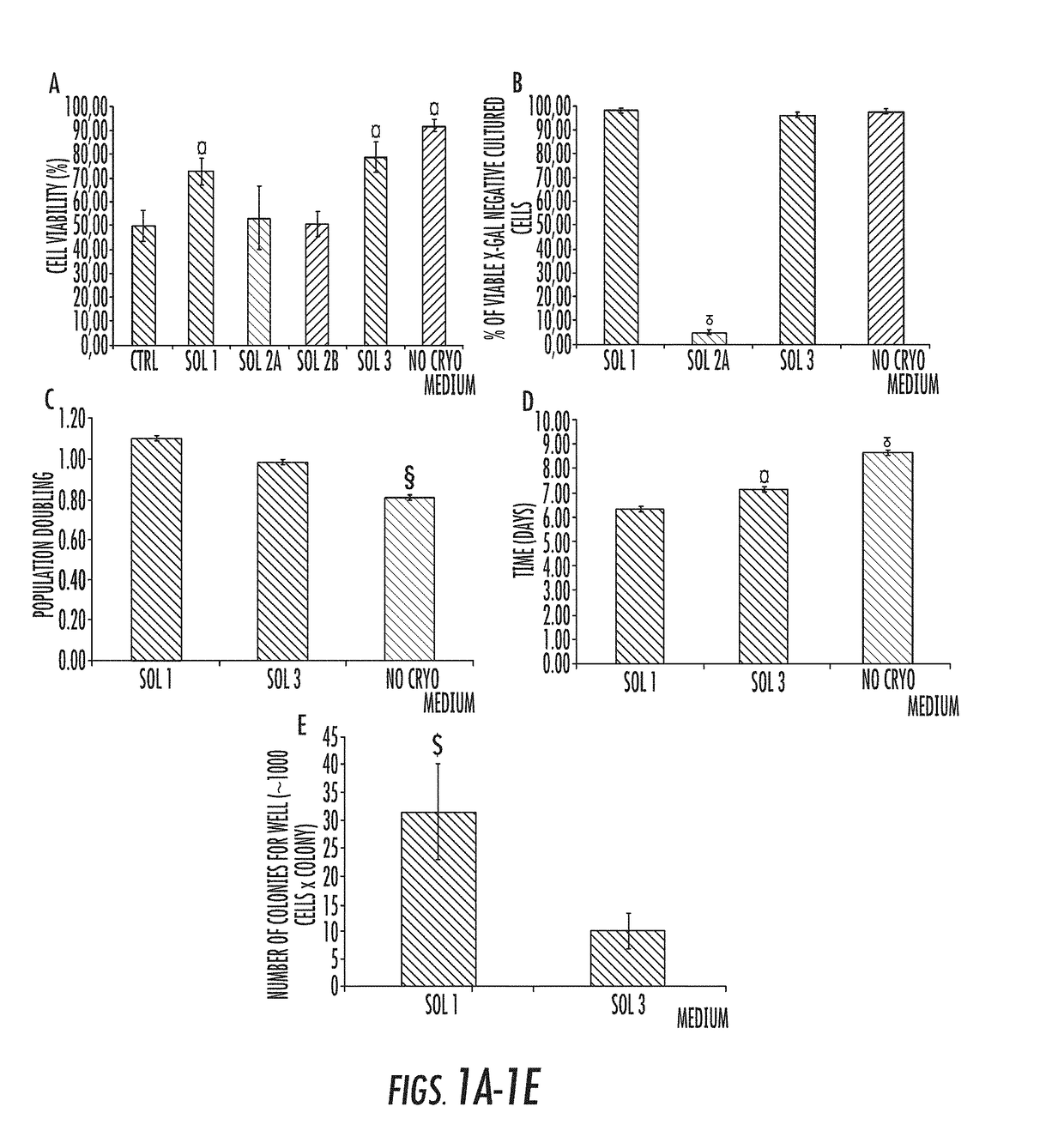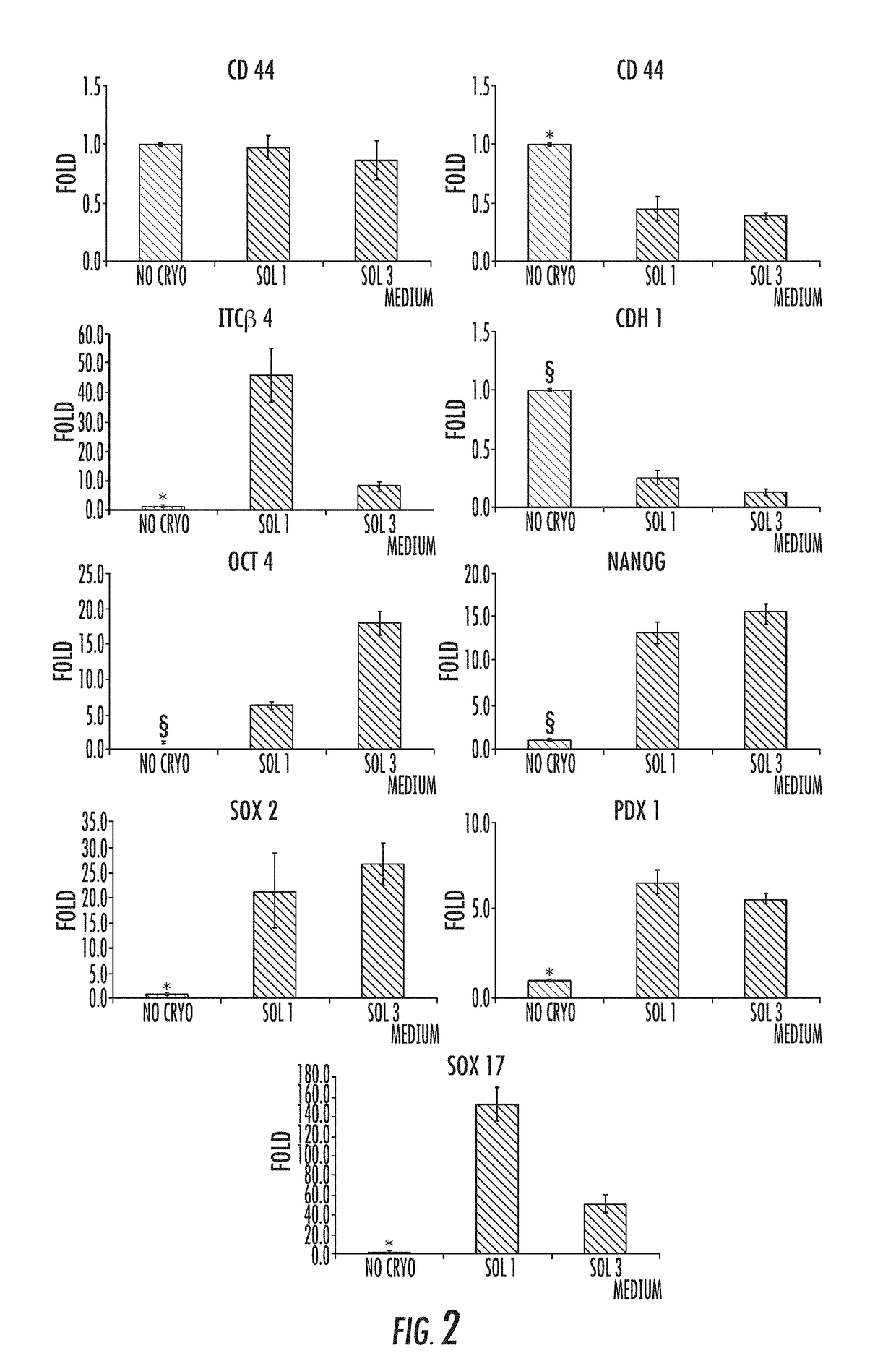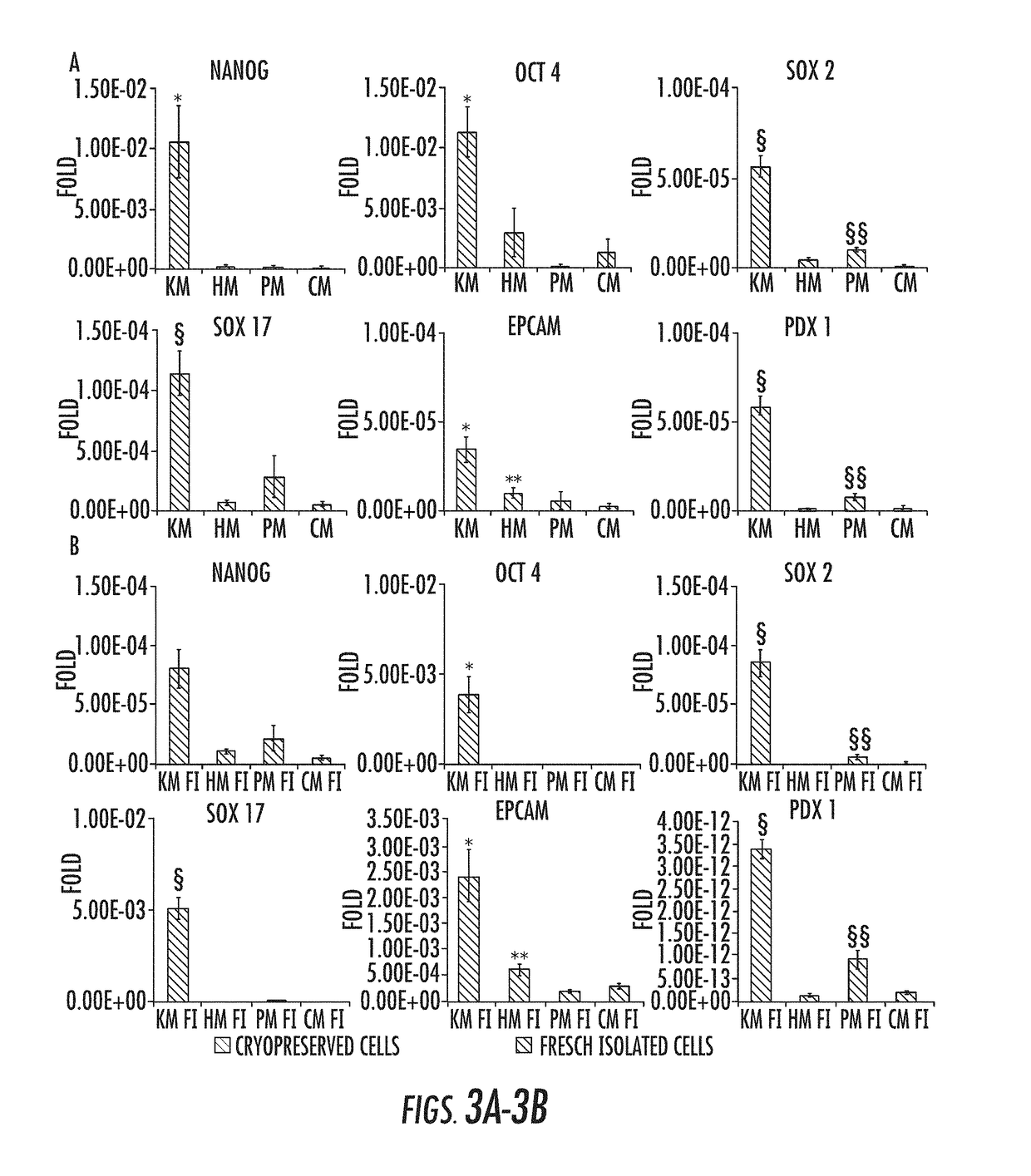Cryopreservation method
a cryopreservation method and cell technology, applied in the field of cryopreservation methods for cells, can solve the problems of large variability in cell viability and engraftment efficiency after thawing, human tissues are difficult to obtain, hamper the sourcing of cells for treatment, etc., and achieve low serum” thawing, minimize ice crystal formation, and high serum” thawing
- Summary
- Abstract
- Description
- Claims
- Application Information
AI Technical Summary
Benefits of technology
Problems solved by technology
Method used
Image
Examples
example 1
rvation Studies
[0079]I. Materials and Methods
Human Tissue Sourcing.
[0080]For in vitro experiments, human extrahepatic biliary tree, comprising common hepatic duct, bile duct, cystic duct, gallbladder, and hepato-pancreatic ampulla were obtained from organ donors from the “Paride Stefanini” Department of General Surgery and Organ Transplantation, Sapienza University of Rome, Rome, Italy. Informed consent to use tissues for research purposes was obtained from our transplant program. All samples derived from adults between the ages of 19 and 73 years. For in vivo experiments, hBTSCs isolated from fetal livers have been utilized. Human fetuses (16-22-week gestational age) were obtained by elective pregnancy termination from the Department of Gynecology (Sapienza, University of Rome, Italy). Informed consent was obtained from the mother before abortion. The study was approved by the local ethics committee of the Sapienza University Hospital. Protocols received the approval of our Institu...
PUM
| Property | Measurement | Unit |
|---|---|---|
| temperature | aaaaa | aaaaa |
| temperature | aaaaa | aaaaa |
| density | aaaaa | aaaaa |
Abstract
Description
Claims
Application Information
 Login to View More
Login to View More - R&D
- Intellectual Property
- Life Sciences
- Materials
- Tech Scout
- Unparalleled Data Quality
- Higher Quality Content
- 60% Fewer Hallucinations
Browse by: Latest US Patents, China's latest patents, Technical Efficacy Thesaurus, Application Domain, Technology Topic, Popular Technical Reports.
© 2025 PatSnap. All rights reserved.Legal|Privacy policy|Modern Slavery Act Transparency Statement|Sitemap|About US| Contact US: help@patsnap.com



